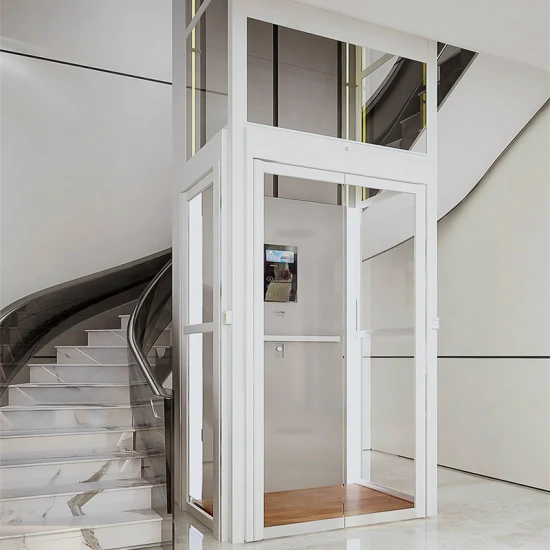Diving Into the Globe of Elevators: Usual Issues Faced by Different Lift Devices
As we navigate through the upright transport systems of modern buildings, lifts stand out as a vital part of our everyday lives. From hydraulic lifts to traction systems and machine-room-less layouts, each lift kind comes with its set of usual issues.
Hydraulic Elevators
Hydraulic lifts, commonly chosen for low-rise buildings, utilize fluid pressure to manage the motion of the lift vehicle (lift repair companies). This system entails a hydraulic pump pressing oil into a cylinder, causing the elevator to relocate the wanted direction. While hydraulic lifts are understood for their smooth and silent operation, they do include their own collection of usual concerns
One common trouble with hydraulic lifts is oil leak. In addition, issues with the control system, such as defective valves or a malfunctioning pump, can create disruptions in the elevator's activity.
Regular maintenance and punctual repair services are vital to make sure the smooth performance of hydraulic lifts. By addressing these common problems proactively, building proprietors can decrease downtime and guarantee the safety and performance of their upright transportation system.
Traction Lifts
When taking into consideration vertical transport systems in structures, another usual type in addition to hydraulic lifts is the grip lift. Traction lifts run using a system of ropes and weights that relocate the lift automobile by gripping onto the hoist ropes. This system enables smoother and faster upright transportation compared to hydraulic systems.
One of the usual problems faced by grip lifts is rope wear. The continuous movement of the ropes within the traction system can cause deterioration over time, potentially causing the lift to breakdown or come to be harmful for use. Routine inspections and upkeep of the ropes are important to ensure the lift's proper performance and safety.
Another problem that grip lifts may encounter is connected to the control system. Troubles with the control system can lead to concerns such as irregular activity, hold-ups in feedback times, and even total closures. Routine testing and upkeep of the control system are critical to protect against such problems and ensure the elevator's dependability.
Machine-Room-Less (MRL) Elevators

One of the key parts of MRL elevators is the small gearless traction maker that is mounted within the hoistway. This device efficiently drives the elevator car without the requirement for bulky tools located in standard traction lifts. Furthermore, MRL elevators usually use a weight system to stabilize the cars and truck, more enhancing their power effectiveness.
Regardless of their get more advantages, MRL elevators may encounter difficulties connected to upkeep and repair as a result of the restricted space for tools installation. Availability for servicing elements within the shaft can be limited, calling for specialized training for professionals. Correct maintenance timetables and regular examinations are critical to guarantee the ongoing smooth operation of MRL elevators.
Overloading and Weight Restriction Issues
Overwhelming and weight restriction problems are vital problems in elevator procedures. Lift makers style lifts with particular weight capacities to guarantee passenger safety and equipment longevity.
When lifts are overloaded, it puts excessive pressure on the motor, cords, and other components, potentially triggering breakdowns or break downs. If they detect excess weight, safety devices such as sensors and overload sensing units are in place to stop lifts from moving. Additionally, going beyond weight restrictions can lead to raised power consumption and damage on the lift system.
To mitigate overloading concerns, building managers need to prominently show weight limits in elevators and inform passengers on the relevance of adhering to these limitations - lift repair companies. Routine maintenance checks by certified professionals can likewise aid ensure that elevators are running within secure weight parameters. By addressing overloading and weight restriction problems proactively, building proprietors can boost lift safety and performance
Electrical System Failures
Going beyond weight restrictions in elevators can not only bring about mechanical issues however also potentially add to electrical system failings within the lift infrastructure. Electrical system failings are an important worry in elevator procedure, as they can create unexpected read the full info here closures, malfunctions, or perhaps safety and security hazards. One typical electric problem is the getting too hot of components due to excessive current circulation brought on by straining the lift beyond its capability. This can bring about damage to the wiring, electric motor, or control systems, causing expensive repairs and downtime.
Additionally, power rises or changes in the electrical supply can likewise interrupt the elevator's operation, impacting its performance and safety. These electric disturbances can harm delicate lift elements such as control board, circuit boards, or sensing units, leading to system failings. Routine maintenance and evaluations are vital to recognize and resolve possible electric problems promptly, ensuring the safe and efficient operation of elevator systems. By sticking to weight limitations and conducting routine electric see here now system checks, building proprietors can alleviate the danger of electric failures in lifts.
Final Thought

Hydraulic elevators, typically favored for low-rise structures, make use of fluid pressure to regulate the motion of the elevator car.When considering vertical transport systems in structures, one more typical kind aside from hydraulic elevators is the grip elevator. Grip elevators run utilizing a system of ropes and counterweights that relocate the lift automobile by gripping onto the hoist ropes. Unlike traditional elevators that call for a separate maker room to house the equipment, MRL elevators incorporate most of the components within the shaft, getting rid of the demand for a dedicated machine area.In verdict, lifts face usual concerns such as hydraulic malfunctions, grip system failings, and electric system troubles.